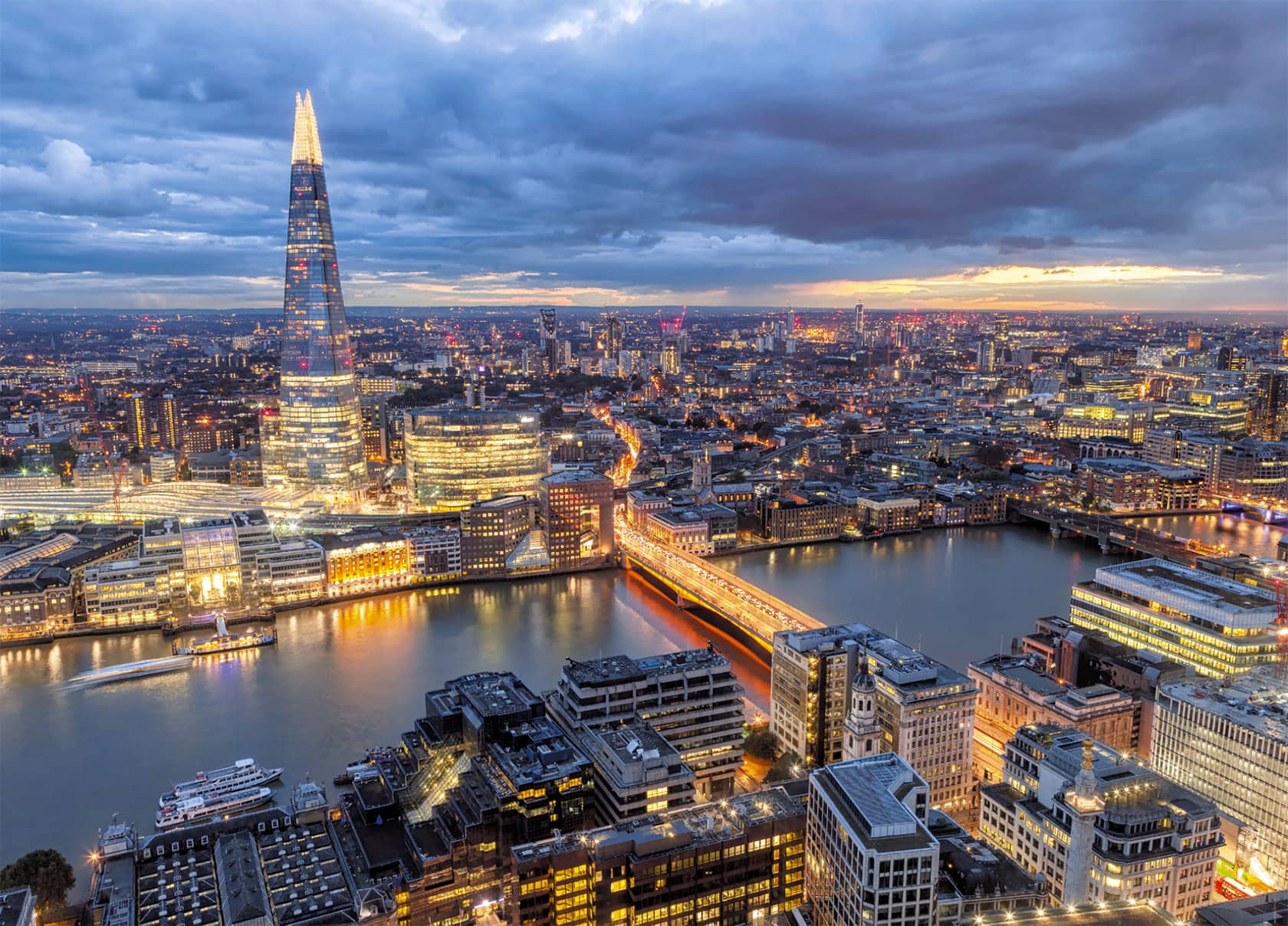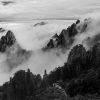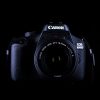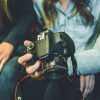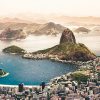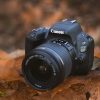In the bustling heart of London, amidst its iconic landmarks and hidden gems, lies a story waiting to be told. Every corner, every shadow, and every ray of light has a tale, and few have captured these tales as vividly as George Johnson. His book, “Photographing London – The Most Beautiful Places to Visit,” has not only been a guide but an inspiration for many, including us at DSLR Photography Courses.
This month, as we embark on our new photo competition theme – “London Through Your Eyes: A Unique Perspective,” we had the privilege of sitting down with George to delve into his journey, his inspirations, and his unparalleled love for London. As someone who has lived in this magnificent city for over 25 years, I’ve always believed that London has countless undiscovered places, and George’s work reaffirms that belief. Let’s dive into his world and see London through his eyes!
George Johnson website: https://www.syxaxis.com
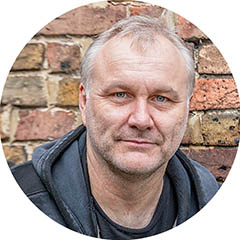
The Genesis of Passion
George, could you share with us the origins of your passion for photography? Did your journey begin with formal education, or are you primarily self-taught? How has this shaped your approach to capturing the stunning landscapes and scenes of London?
From the earliest age my mother, father and I would always seem to be on the road going somewhere, maybe just for a day, sometimes a week or two. The family camper van, which my dad built from a second hand VW van, would be forever on the go and my mum would always be taking our photo. They worked hard in their jobs and we’d be getting away as often as we could. We had family photos in albums going back to around 1940, so photos fascinated me from an early age. In the early 1980s my father bought Olympus and Mamiya cameras and my mum and dad would be forever taking photos. My father built his own darkroom and he was more interested in processing and printing. My mother was always interested in just happily snapping away at anything that interested her. My nan gave me my first camera when i was about 4 or 5 years old, an original Kodak Box Brownie, my mum later replaced it with a little 35mm Pentax pocket camera. I suupose phtotography meant you got to see something and freeze time, that fascinated me. My mother sadly passed away in 2005 at the age of 63 from a stroke, I think that spurred me to start doing something useful with myself.
I didn’t do much photography from about 1985 until around 2006 when I wanted to try some “proper photography” and so I bought my Dad’s old Canon 300D and a couple of lenses. I went a little nuts with it and would just snap anything I liked the look of, absolutely anything! There’s a great quote by Gary Winogrand, “I take photos to see what the world looks like photographed.” and I guess that’s where I really got going again and it’s still something I kind of live by to this day. I spent about 4 years just taking photos purely for my own amusement, I bought some cheap Cokin filters and a tripod, I had zero idea what I was doing but I was having fun doing it. Once again discovered something important, you must have fun with creativity else what’s the point. Every weekend I would go somewhere just to take photos of that place, any time of day. I refused to share any of the pictures, refused to put them online until around 2010 when I felt I wouldn’t be laughed at by real photographers.
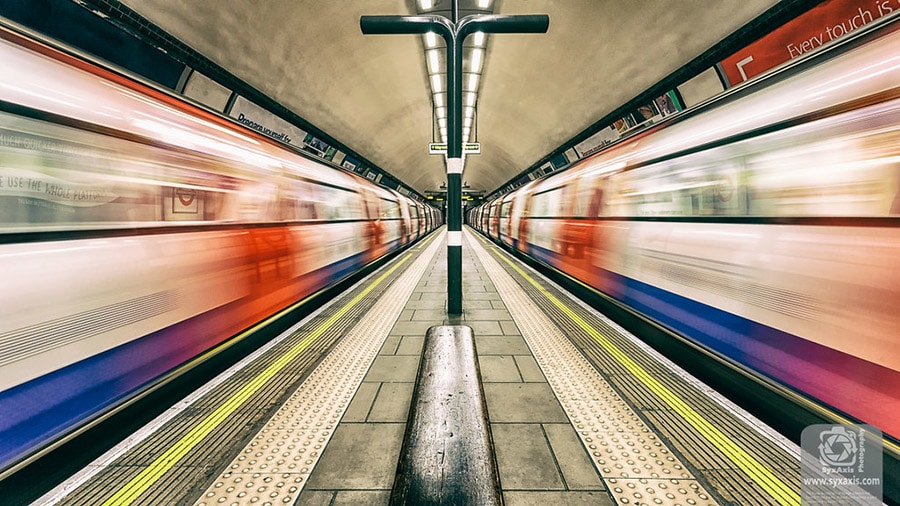
Thing was I genuinely feel that by refusing to take any formal training in art or photography, keeping myself to my myself and just playing I learned so much by trial an error, I didn’t get blindsided by bullshit from the supposed experts. Don’t get me wrong there’s a lot to be learned from well trained people but it’s finding the right mentor and social media is unlikely to offer that, at least not very easily. That’s kind of my goal with photography. I don’t care about formal techniques or your £25k Hasselblad, show me a simple picture that tells me a story, that taps right into the emotional centre of my mind and gets me hooked, then I know you “feel” creativity not just do it.
I don’t decry anyone who wants to learn from experts but you will never learn the emotion of art, the power it holds without doing it over and over and over, thousands and thousands of pictures taken, studied and learned from. I estimate I must have taken around 500,000 images in the last 17 years and out of that I have about 7,000 images. People will say I’ve failed as my ratio of hits is horrendous. I say I never failed, I simply had thousands of learning experiences to find right image, well that’s my excuse!
Discovering London Through the Lens
Your book ‘Photographing London’ has been a guide and inspiration for many, including myself. Can you share what initially drew you to focus your lens on London, and how you go about capturing the essence of this historic city?
I was born in 1971 in Lewisham which is just below that big bend you see at the beginning of the Eastenders opening titles sequence. My folks all come round there for the last 4-5 generations, and my mother, father and I lived in Deptford where my father worked in the late 1970s. We moved up to Bedofordshire for about 5 years for my father’s job and then finally back to the area just west of Harlow in 1985. When I was 17 I would often get the train into London to go buy obscure heavy metal albums I couldn’t find anywhere else ( I’m huge heavy metal fan! ). I would ride the Underground just waste time before going home, enjoy this throng of people. Around 1993 I got a job working nights as IT tech for a financial investment company and I would head into the city around 10pm, walk the dark streets on my way to work or ride the buses. Just seeing the people going home after a night out, London winding down after a hard day gave me a unique view of the city. Sometimes I’d work a Friday night shift and finish about 4am. I’d walk from the West End to Liverpool Street, roughly 3 miles along the Embankment by the Thames, there’d be just a few taxis about a few late night revellers going home but mostly the city was slumbering and I absolutely fell in love with London as it is in the early hours of the morning.
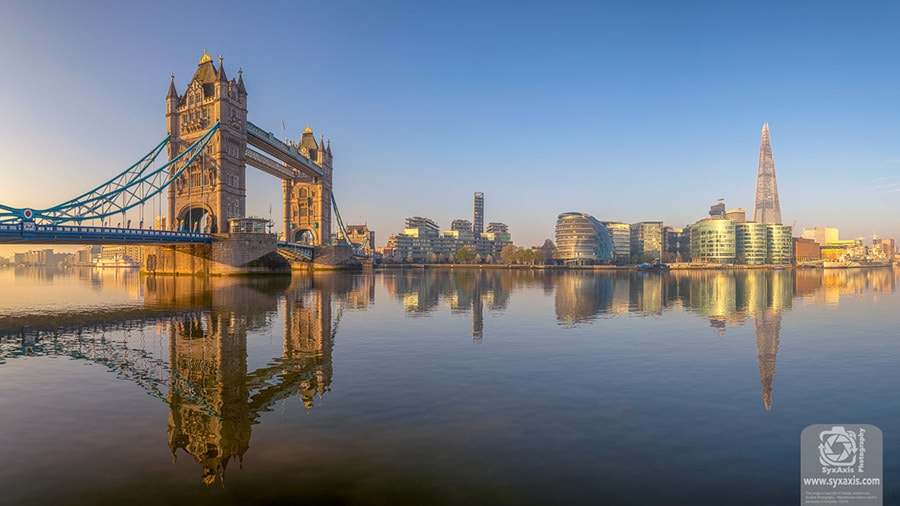
I guess when the time came and I found myself with a camera and a desire to shoot images of anything and everything, after taking the usual nature and landscape shots, badly I might add, I decided to start looking at taking photos of somewhere I was spending 8 hours a day Monday to Friday, the city of London. I would get up about 2am on Sat or Sun morning, drive into the city, park up and just wander with my camera and tripod, learning what night and dawn photography was all about in a city. Something truly special about being in a city that’s home to 7 million people and yet feeling like your the only person around, no one bothers you, you get to take all those amazing viewpoints that tourists fight over during the daytime, you get them all to yourself.
Thing is, as I say in the book, people see cities as dirty, smelly and cold places with no soul. You couldn’t be more wrong, cities are alive and it’s our job as artists to bring that soul out and show people. You have incredible light that bounces of stone, steel, concrete, glass, plastic, etc, light moves in a million different ways , it bends and twists and when it works it’s way through city streets, it’s just a magical experience.
The Journey of Creating a Book
Creating a book is a significant undertaking. Can you walk us through the process of compiling ‘Photographing London,’ from the initial idea to the final publication?
I guess it all started with Mick from Fotovue. I’d been posting a lot of my London pictures on Facebook and I joined a particular channel he was running, I was posting more and more London pictures and I posted one of the London Eye at dawn that got my my first LPOTY competition place. Mick was working with Stuart Holmes, the guy would start Fotovue just to publish his famous book on Lake District. Stuart I think wanted a professional to shoot London but the person they found wasn’t able to commit and Mick suggested me for the gig. I got the feeling Stuart wasn’t convinced I could handle it, I was just a hobbyist that Mick had found on Facebook, no pedigree or portfolio to speak of. My family and I took a week’s holiday up in Cumbria and I went round to see the guys and talk about it. I think Stuart was happier after he’d spoken to me and seen I was passionate about London and photography, plus I was there 5 days a week doing my day job. I submitted a sample location and images for Tower Bridge ( the same one that’s in the actual book ) and I got the gig.
It was supposed to be about 12 months, about 250 locations , some bits and bobs about what, where and why, finally all done. In the end it took 5 years of long hard slog, about 125,000 images shot, cut down to a few thousand and finally 900 images covering 400 locations. I’m a perfectionist when it comes to shooting images and nothing is ever good enough. There would be days I went out, shot 50 photos, got so pissed off with myself I’d go home and be in a foul mood for a week ‘cos I felt I’d failed and the books was going to fail if I didn’t get my act together. I think my wife and I had about 3 blazing rows during the making of the book as she was helping with the mapping and logistics of what i was doing. I’d be yelling about how shit it all was, the photos were crap and I was going to delete the whole damn project and start again. She knows me and what I’m like, told me to just get out the of the house for an hour to calm down! Ha ha! I actually came close once to just deleteing the whole thing as I was so angry with myself one day, I’d been out at 1am to shoot something and it failed to come together and I was absolutely livid with myself for failing. Mick and my wife Lisa often stepped in, told me the images were absolutely stunning for a location and I’d let it go and go somewhere else, start all over again trying to make the perfect image. I lost count the number of times my wife would tell me I would never get a perfect image, to which I’d reply that that’s no reason not to try to get that perfect image. Perfectionism is a blessing and a curse.
I didn’t want to write some rip-off book that would just cover the 10 famous locations we can all name off the top of our heads, I wanted people see so many interesting locations that they’d be so desperate to get on a train or drive to the city just to see them for themselves. I’d spend 6-7 hours some Saturdays, just walking around the city. During those 5 years I would go to some places 20 times and take 250-400 images from all angles, go back morning, noon and night, until I was happy with just 2-3 shots that covered what I wanted “say” about a location through the photos. I would often head into the city at 5am and walk 7-8 miles around the city for hours and hours just shooting images just so I could “feel the city”.
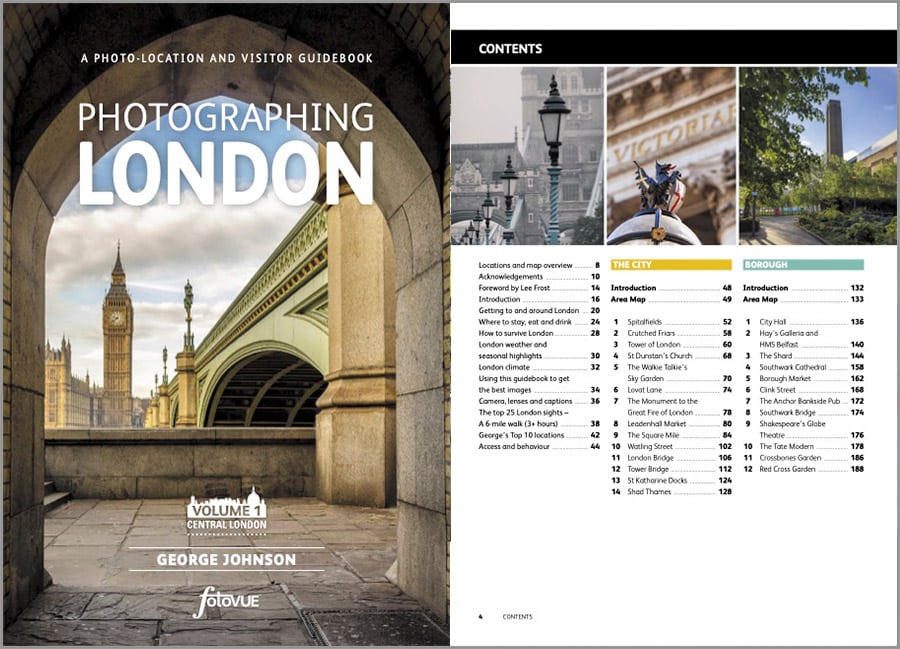
Thing is I didn’t just shoot locations, i had to come home and write about these places, every word you read in the book is mine that I wrote. I didn’t have anyone to write it for me, I had to write the whole thing myself. We had a proof reader and an editor who took my “witterings”, checked the grammar and spelling. In the end I think the proof reader only had to check about a dozen things just to clarify what I meant by certain passages, the rest was just my poor grammar that needed correcting.
February 2018 my wife and I went up to stay with Mick at his house for a few days and we also got Dom our map guy to stay over for a night, a few drinks and we all got on really well. We spent 2 whole days just going over the ideas for what we wanted to do for the maps in the book. We didn’t actually make any maps, we just talked about how we wanted them! Ha ha! Dom went away and worked on them. London, unlike some of the more open landscape countryside locations, is very detailed and the scale required for mapping it is unreal. It’s only roughly 8 sq miles but we needed such detailed maps as you can easily miss something that could be in the next street where you got lost!
March 2019 we finally started to sift and select locations for the book. I’d already planned out the locations I wanted so we simply had to select as many as made sense, in the end we used about 400 locations out of the 425 I’d planned and shot. July 2019 we really got cracking on the writing I was finishing off writing about locations that had not come up to spec to my mind. I worked thorugh from beginning to end, submitting each set of writings and images.
The final thing that had to be done was one thing that Mick was absolutely dreading. Every image has to have the meta data ( focal length, lens, aperture, camera, etc ) for all 900 images needed all that information extracted and put into the layout for the book. That normally takes about 3-4 weeks! Well I’ve spent my whole working life manipulating data on computers. I sat there on the Thursday afternoon and wrote some code that would scan all the images, extract the required data, scale down a small version of the image, then place the small image and all the data into an Excel spreadsheet, build up sheets for each chapter for the book, took me just 2 days to code it. Normally it would take someone 3 weeks to get all the info out, I could do it repeatedly with just the click of a button in about 15 mins. Mick thought I was joking when I told him! He didn’t believe me until we had a minor problem with the data, every part was formatted in the wrong order, that’s where I scored big time, I simply swapped the outputs and re-ran the process from scratch and had the sheets back to Mick within the hour. Couldn’t believe how quickly and easily I as able to help him out as I’d fixed and checked 900 pieces of data in 30 minutes, he was gobsmacked as it saved him so much time that he was able to get on with other work, something that was just not possible with other books he’s worked on.
The one thing Mick as said was that despite London book being one of the biggest and most complex to assemble, it was also one of the easiest to work with. I don’t have an ego about my work as I’m a nobody who’s just grateful to be able to have fun and do such great projects. I simply didn’t mind how the book was assembled so long as it used images where I’d tried my best to get the photos I felt were worthy and so to that end I made every effort to help Mick in any way I could. If Mick asked me to change something then 99% of the time I would simply agree, I think I only insisted on one or two things be left alone in the end and that was something Mick has said made it such a pleasure to work on, which was nice.
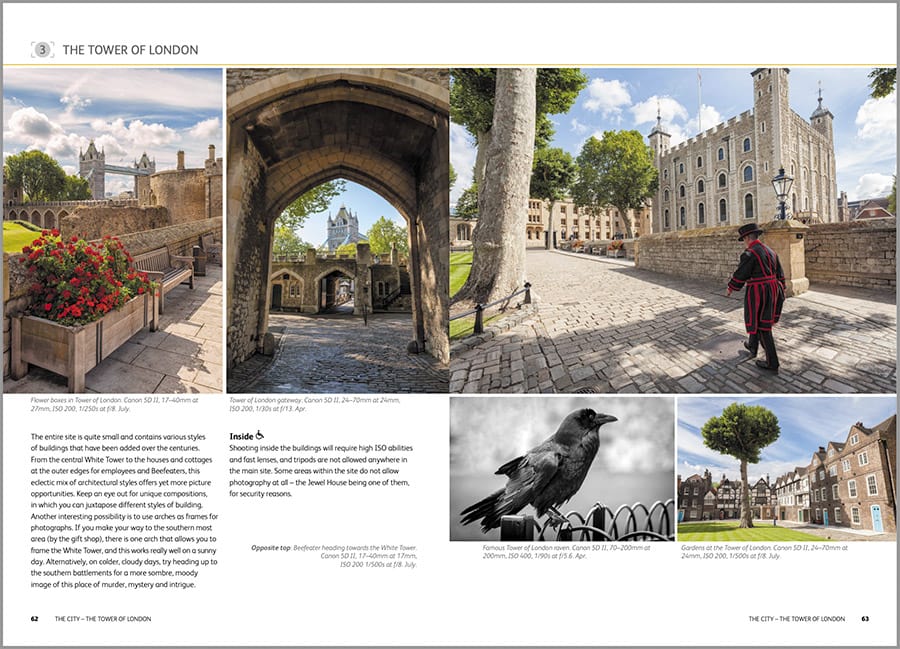
Choosing Locations
With a city as vast and diverse as London, how do you decide which locations to feature in your book, and do you have a personal favourite?
Like I said I wanted to shoot interesting places that many people had never even considered as photogenic and a lot of the locations were simply found organically. I would get the first train into the city on a weekday and wander from the station across London to the office taking as many different routes as I could come up with simply to see places at different times, weather and light. This constant “churn” allowed me to hone down the 400 or so locations I genuinely thought might be interesting. There’s probably about 10 locations that are literally just filler to pack out the book and keep the flow going as you move through an area, some parks are not that special for example but they’re just nice places to catch if you have time on your way somewhere more interesting. That was more or less how most of the places ended up in the book. I would also look through Google Maps, virtually wandering the streets to see what was there and then actually go there to see if the scale and perspective would work for an image. Some places you’d turn a corner be blown away by what you found. I was always looking places that would “shatter illusions” of what people think they know of London as just cold and made of concrete, you can suddenly turn a corner in the City and find the greenery of Dunstan’s Church yard right in the middle of all that steel, glass and concrete. It was things like that I wanted to capture most, a surprise that would challenge people’s mistaken percpetions of London as more than just the same old boring locations.
When you’ve shot so many places so many times it’s hard to pick just one or two places you liked but I guess if I’m pushed, the whole South Bank from London Bridge to Westminster Bridge, I walked that almost every weekday for 3 years and I saw so many people and images right along there. When I bought a small mirrorless camera and started doing tons of street photography, my favourite place to “lurk” was the West End, places around Covent Garden and Leicester Square are superb places to catch people unaware. I would hang around the West End for 1-2 hours some days and get maybe 50 shots with about 20 keepers.
I suppose the Victorian cemetaries are very much a favourite of mine, especially Brompton. I think the cemetaries were wondeful as I’ve always loved being in cemetaries, the dead don’t sit there on their phones or talk about utter nonsense! Ha ha!! Seriously though, the cemetaries were a much, much slower pace than the city centre, you have to slow right down and you’d be there for 2 hours in a cemetary just watching people, the birds, foxes, rabbits and squirrels, they’re just very peaceful places as you’d expect but they force you to confront what we must all one day confront and they teach you to appreciate your life and to go live it as there’ll be plenty of time to “sleep when I’m dead”! ha ha!
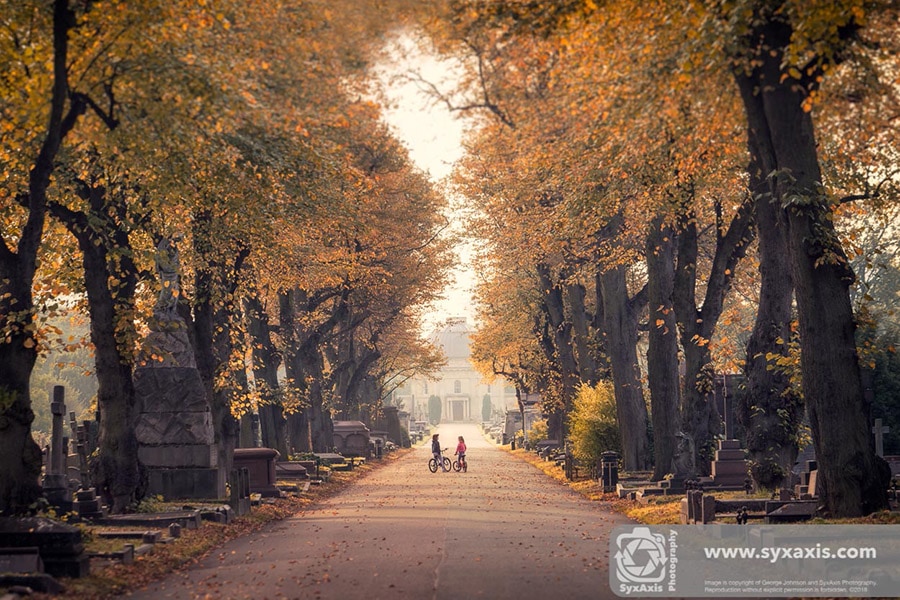
The Second Volume
You’re currently working on the second volume of ‘Photographing London,’ focusing on Outer London. Can you give us a sneak peek into what readers can expect from this upcoming book?
Argh! “second album syndrome”, I’m dreading this one!
As you move out from the city centre you find more spacious locations and it gets harder to find places you can flit between and I’ll be honest and say that it’s been harder to do vol2 as I’ve had to visit one location per trip and so it’s taken a lot longer to keep going back over and over and nail the shots. Vol 1 was more driven toward tourists and casual visitors, whereas Vol2 will be more dedciated toward photographers.
There’s way more tripod style shooting done for Vol2, I’m down in Richmond Park during Autumn when the misty ponds are in full glory, the rutting stags and the parakeets! Then I’m 10 miles away over in Docklands at 2am shooting the most incredible skylines. I’ve done more slow motion shots with things like traffic streaks. I’ve still managed to some fun casual handheld shots similar to those in vol1 but there’s more “photo artistry” I feel put into vol2, a slower pace and I think some people are really going to be surprised at what you can find in the outer boroughs when you slow down and take time to look.
While I was shooting for vol1 I shot a load of street photography, hundreds of images of people just being quirky and so Mick has set aside some space in vol for a street photography section to be included, we have about 250 street images to go through and whittle down, so while there were some in vol1 just to liven up the locations, this time in vol2 there will be some straight forward street photography images and a small guide on how to go about shooting street photography, something I had to learn by trial and error and as someone who’s quite shy and reserved it was a challenge but very rewarding and I hope that comes across in vol2.
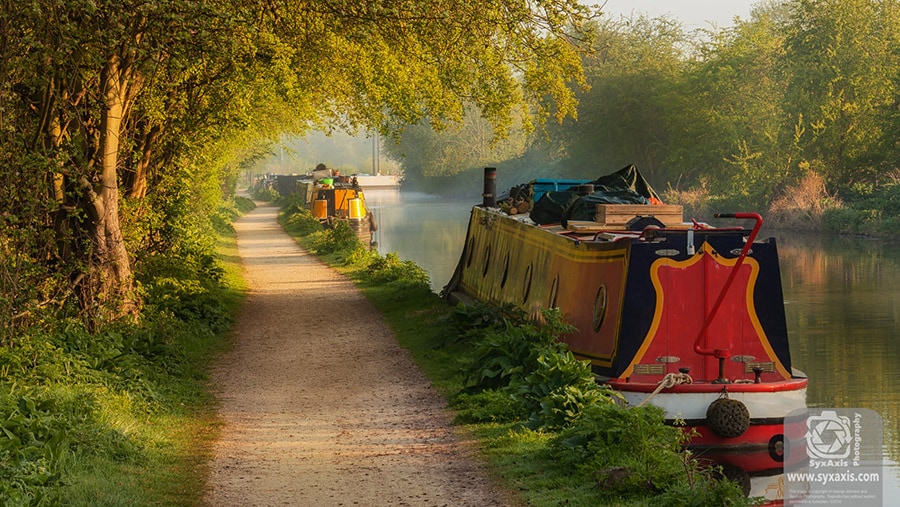
Gear and Techniques
Could you share some insights into your preferred photography equipment and techniques for capturing the stunning images seen in your book?
I’ve also never understood this obsession with gear and constantly changing and buying kit, most of the time it’s just people buying new toys and expecting each new purchase to somehow magically transform their photography into something world class. That’s never going to happen. The internet is full of “armchair experts” who know the specs 172 lenses but their images are short to cold perfection with no story of emotion, nothing to say other than this kit works like this. Your camera kit is an extension of you, you need to be able to use your camera kit on instinct without any need to think about the knobs and dials. To me you must be able to see something and almost instantly react to it , setting the dials without thinking and then just shoot. I competed at national level in sport as a child and my father taught me thsat you must operate on instinct and consistency, you must be able to just repeat your actions over and over without thinking, it must become second nature to you. Once your actions and reactions become second nature, then you can enjoy the activity to it’s fullest. Photography has the element of artistry so emotion must be considered but you cannot fully appreciate the emotion you seek to capture if you’re spending all your time faffing around with the kit, you don’t have time sometimes as the shot will be gone. You need to know your kit like and old coat or pair of gloves, feel it and know it and that only comes if you just use it over and over and know your kit like an old friend. You keep changing bits and you will never find that.
The whole book was shot with just 3 cameras and a few lenses ( the picture of my kit in the book is literally all I used ), Canon 5D MkIV, Canon 5D MkII ( converted to infrared ) and Sony A6000. Lenses were a 27-70mm 2.8L, 17-40m f4L, 70-200mm f4L IS USM, the Sony was just the bog standard 16-50mm 5.6 and a Samyang 8mm fisheye. That’s it! I was able to carry all that in one bag most days.
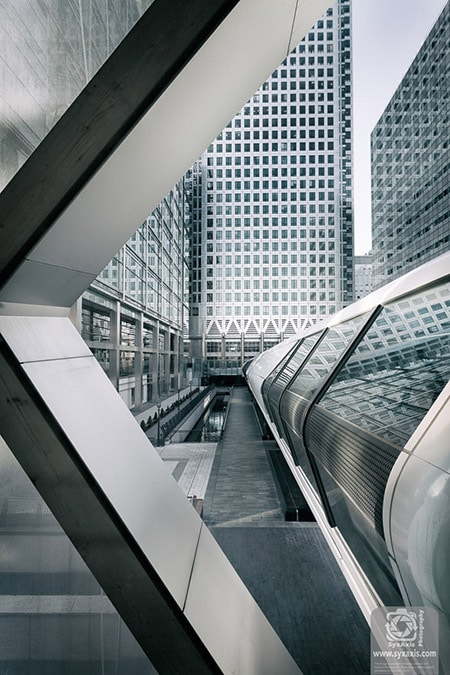
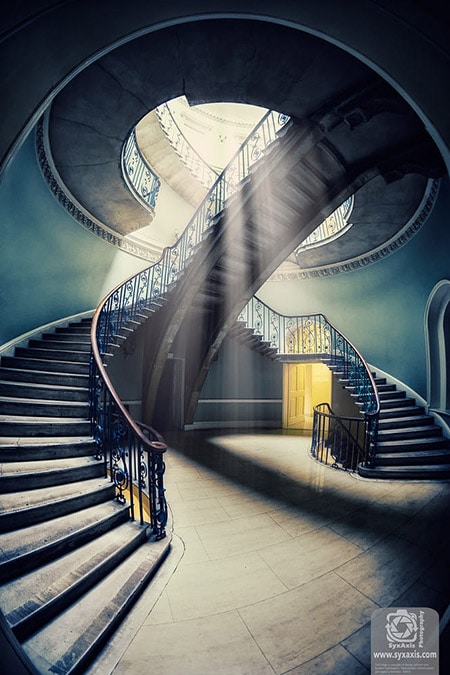
Challenges and Learnings
What have been some of the challenges you’ve faced while photographing London, and what have you learned from these experiences?
How much fricking walking there was, if I knew that to begin with I’d never had signed up! Ha ha! Seriously, I think if I’d known how mentally strong you have to be to keep pushing through no matter what gets in the way, I’d have probably never signed up. It got harder and harder getting those small wins, improving a good shot to an excellent one and even then knowing that you could do better if you pushed yourself some more.
I think the biggest fear in my mind was that people would think the images are rubbish and bear no resemeblance to anything they would wish to see let alone photograph in London. Finding a new location and each time I did knowing that it was a “reset” and I’d have to come back again and again to find the best light, best angles over and over and over.
Never knowing if it’s good enough. I had to shoot thousands of images and the only people allowed to see them and comment were Mick and my wife Lisa. Mick is a photographer but my wife is not, that’s no disrespect to her I had to had faith and trust in myself and in their opinion, that they weren’t just pulling my leg and saying the images were good when they weren’t. I couldn’t put any deent London images on social media for 5 years, the only images I’d post were some throwaway shots or my nature landscpaes I’d shoot just for a break from the city shooting. I had to keep the images under wraps until they appeared in print and people got to see them. I think that’s the reason I kept shooting, I had no idea if the shots were any good, if I like them them then that was “acceptable”, to be an exceptional shot it would have to be something truly stunning, so never knowing if an image was good enough, especially if you’re as hard on yourself as I am where nothing is ever good enough.
When the book finally got published and people started seeing all the hard work, that was an amazing feeling. I sold 20 copies of the book to people in my office alone, they were buying it for themselves and for family member and everyone single one of them was just full of praise and that just blew me away. Then the reviews started on Amazon and nothing but praises, the only downside was that people love the book but found it hard to carry around with them as it was so big and heavy. Can’t win ’em all!
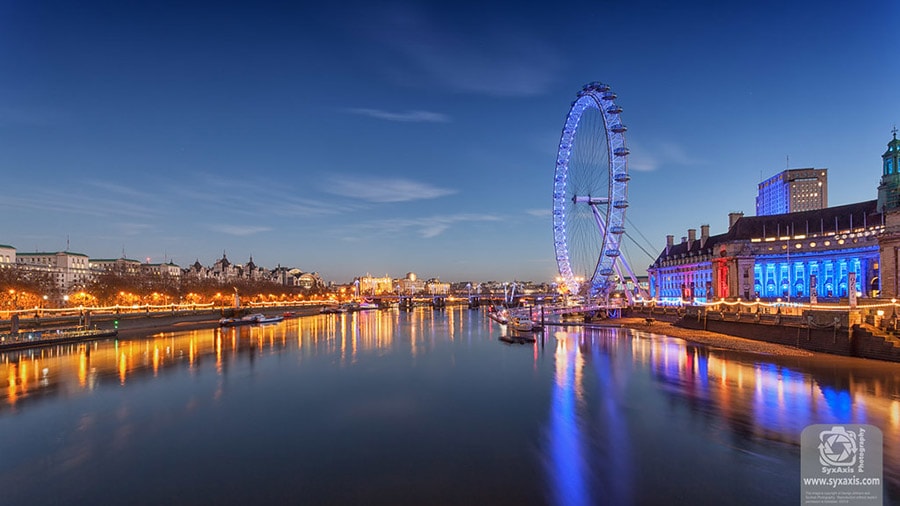
Advice for Aspiring Photographers
Lastly, for our students and all photo enthusiasts looking to photograph London or any city through their own lens, what advice would you offer?
I think the most important thing I can ever say about this game to any photographer is take every piece of advice with a pinch of salt! What works for your tutor, your friend or that person’s work you love on Instagram, doesn’t mean it’ll work for you. You have just keep shooting so you learn what works for you.
“There are no shortcuts in photography.”. You can pay for all the gear, courses and sessions you wish but the only thing that’s going to bag you great shots is you actually getting out there and shooting thousands of failed shots and learning from them. Shot, fail, repeat!
Learn to critique yourself, you will never shoot a perfect image and you’re on a lifetime journey to constantly improve your skills, this is not a sprint it’s a marathon. You need to feel the constant hunger of wanting to be better as that will drive you on, that will wake you up at 1am and get you into the car and off to a shoot 200 miles away for a sunrise. Yes I’ve actually done a 400 mile round trip in one moring just for a single shot that I waited 3 years to get, I was there for just 45 mins, got the shot and drove 200 miles home again.
People these days want instant results, photography and indeed any artistry, is like learning to play a muscial instrument, a lot of bum notes and clumsy mistakes, frustration but “practice makes perfect”. Don’t waste your time sitting on the internet, arguing with people in forums about stuff, grab your camera, shoot stunning images and show them how it’s done. All the time you’re out there doing it, they’re wasting their time arguing about stuff they have little experience in, don’t just talk it, live it.
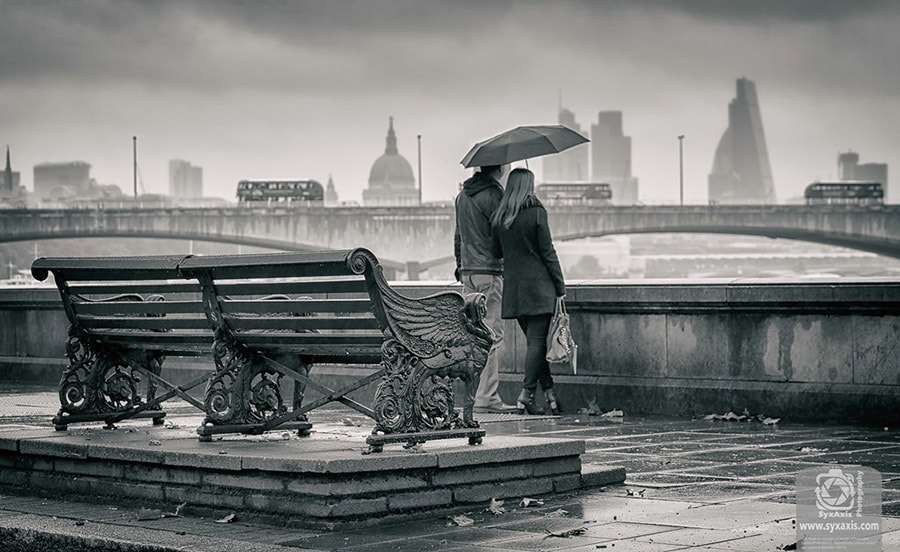
Wrapping Up
George Johnson’s passion for photography and his deep connection with London is evident in every frame he captures. His journey, filled with trials, learnings, and an undying love for the art, serves as a testament to the power of persistence and the importance of seeing beauty in the everyday. As we wrap up this enlightening conversation, we’d like to extend our gratitude to George for sharing his story and insights with us.
For those moved by George’s words and work, we wholeheartedly recommend his book, “Photographing London – The Most Beautiful Places to Visit.” More than just a guide, it’s a journey through London’s iconic spots. The book provides detailed descriptions of numerous central London locations, complete with maps, travel information, and advice on the optimal settings and times to capture them. Delve into the nuances of photography, from the best angles and settings to understanding the influence of weather, seasons, and even the Thames tides on your shots.
Additionally, for those reading this interview and feeling a spark to learn photography, we offer a variety of photography courses in London suitable for all levels of skill and experience. For instance, we have the ‘Intensive Beginners Photography course‘ – the ideal course to kick start a new hobby and learn about the camera. We also offer specialized workshops like ‘London Street Photography Course‘ around Shoreditch and Spitalfields Markets, and ‘London Night Photography Course‘ around the beautiful South Bank.
As our students and readers venture out to capture their unique perspectives of London, let George’s words be a reminder: It’s not about the gear or the accolades; it’s about the story you want to tell.
So, go out, explore, practice, and let London’s soul shine through your lens.
